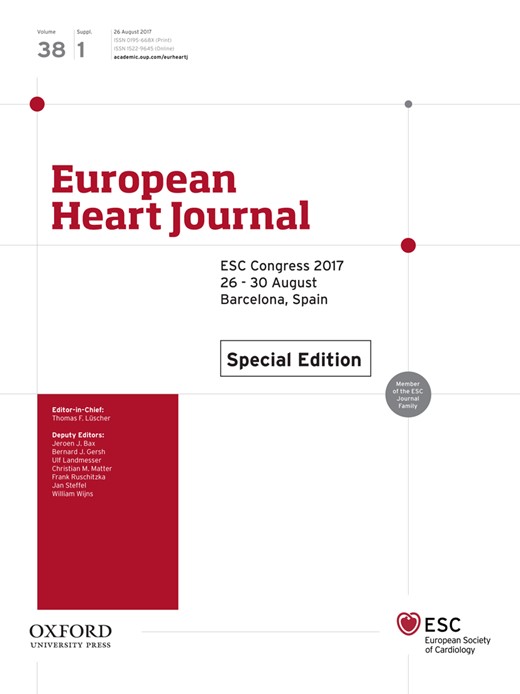-
PDF
- Split View
-
Views
-
Cite
Cite
Y. Goto, A. Funada, Y. Goto, P6418
Chest-compression-only bystander cardiopulmonary resuscitation for children with out-of-hospital cardiac arrest, European Heart Journal, Volume 38, Issue suppl_1, August 2017, ehx493.P6418, https://doi.org/10.1093/eurheartj/ehx493.P6418Close - Share Icon Share
Background/Introduction: In the Guidelines 2000 for cardiopulmonary resuscitation (CPR) by the American Heart Association (AHA) with the International Liaison Committee on Resuscitation (ILCOR), an “adult” is defined as a person aged ≥8 years (approximately >25 kg body weight) throughout the “Adult Basic Life Support” section. In 2008, AHA recommended chest-compression-only CPR (CC-CPR) for adults with out-of-hospital cardiac arrest (OHCA) to increase bystander CPR. However, CC-CPR for cardiac arrest does not apply to paediatric cases. In 2015, ILCOR recommend that rescuers provide conventional CPR with rescue breaths for paediatric cardiac arrest; if rescue breaths could not be provided, chest compressions should at least be performed. Therefore, we hypothesise that CC-CPR by bystanders leads to neurologically intact survival equivalent to the outcome of conventional CPR after OHCA in children aged ≥8 years.
Purpose: We aimed to compare the proportions of 30-day survival and 30-day neurologically intact survival (Cerebral Performance Category 1 or 2) between 2 types of bystander CPR (CC-CPR or conventional CPR) among children with OHCA.
Methods: We analysed the records of 1410 patients (age 8–17 years) who experienced OHCA treated by emergency medical service providers. Data were obtained from a prospectively recorded Japanese nationwide Utstein-style database from 2010 to 2014. Patients were divided into 2 groups by type of bystander CPR: CC-CPR (n=1024) or conventional CPR (n=386). The outcome measures were 30-day survival and 30-day neurologically intact survival. Crude rates and adjusted odds ratios (ORs) for 30-day outcomes in the 2 groups were analysed with multivariate logistic regression models before propensity-score matching. Moreover, the difference of 30-day outcomes between the 2 groups were analysed after propensity-score matching.
Results: In unmatched cohorts (n=1410), the overall crude rates of 30-day survival and 30-day neurologically intact survival were significantly higher in the conventional CPR group than in the CC-CPR group (20.7% vs. 14.5% for survival, P<0.001; 14.3% vs. 6.8% for neurologically intact survival, P<0.001). However, the adjusted ORs for 30-day outcomes of conventional CPR did not show significant differences from those of CC-CPR: adjusted OR 0.98 (95% confidence interval 0.67–1.42) for survival, P=0.90; adjusted OR 1.37 (95% confidence interval 0.83–2.26) for neurologically intact survival, P=0.22. In matched cohorts (n=726), no significant differences were found between the conventional CPR and CC-CPR groups in 30-day outcomes: 19.0% vs. 20.9% for survival (P=0.52) and 12.9% vs. 9.6% for neurologically intact survival (P=0.16).
Conclusions: This population-based observational study showed that CC-CPR was equivalent to conventional CPR with rescue breaths in 30-day outcomes for children with OHCA aged ≥8 years. Therefore, CC-CPR could be delivered for those children considered as “adults”.
Acknowledgement/Funding: The Japan Society for the Promotion of Science (KAKENHI Grant Number 15K08543)



